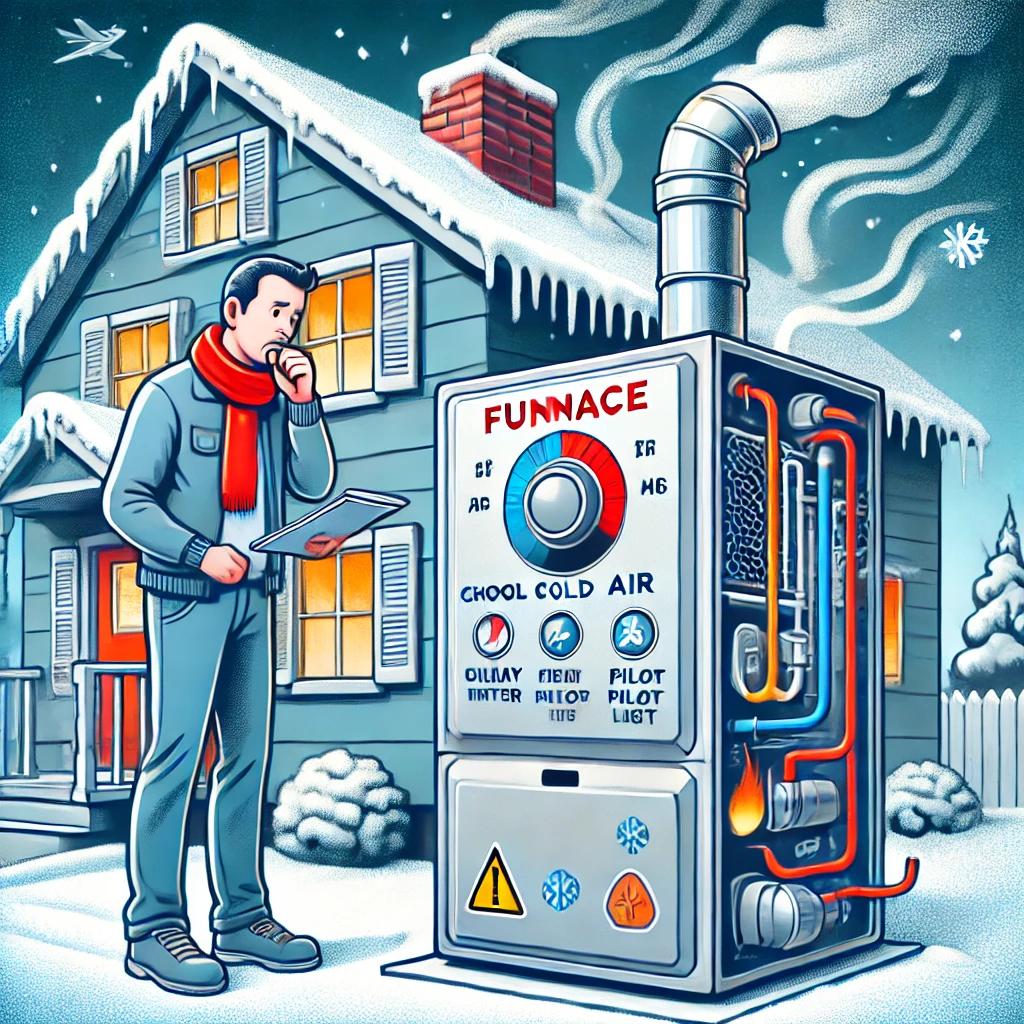A furnace that blows cold air instead of warm air can be frustrating, especially during the colder months. If you’re experiencing this issue, it’s essential to understand the potential causes and how to fix them effectively. This guide will walk you through the most common reasons why your furnace might not be heating properly and provide solutions to restore warmth to your home.
Common Causes of a Furnace Blowing Cold Air
1. Thermostat Issues
One of the first things to check when your furnace starts blowing cold air is the thermostat settings. A simple mistake in thermostat configuration can prevent your furnace from producing heat.
Possible Thermostat Problems:
- The thermostat is set to “ON” instead of “AUTO”.
- The temperature setting is too low.
- Dead batteries in a battery-powered thermostat.
- Incorrect thermostat programming or a malfunctioning unit.
Fix:
- Ensure the thermostat is set to “AUTO”, not “ON.” The “ON” setting keeps the blower running continuously, even when the furnace is not heating.
- Replace the batteries if your thermostat uses them.
- Reprogram the thermostat if needed.
- If the thermostat is faulty, consider replacing it with a new one.
2. Furnace Overheating and Safety Shutoff
If your furnace gets too hot, it may activate a safety feature that shuts off the burners but keeps the blower running to cool down the system.
Causes of Overheating:
- A dirty air filter blocking airflow.
- A malfunctioning blower motor.
- Clogged or blocked air vents.
Fix:
- Check and replace your air filter if it’s dirty or clogged.
- Make sure air vents are open and unobstructed.
- If the issue persists, contact an HVAC professional to inspect the blower motor.
3. Pilot Light or Ignition System Failure
If you have an older gas furnace, a pilot light failure could be the culprit. Newer furnaces rely on electronic ignition systems, which can also fail.
Common Pilot Light Issues:
- A dirty or faulty thermocouple.
- The pilot light is out due to a gas supply issue.
- A faulty electronic ignition system in modern furnaces.
Fix:
- If you have a pilot light, check if it’s lit. If not, try relighting it according to the manufacturer’s instructions.
- Clean the thermocouple to ensure it detects the flame properly.
- If the ignition system is faulty, you may need a professional repair or replacement.
4. Gas Supply Problems
A furnace requires a steady supply of gas to operate correctly. If the gas supply is interrupted or insufficient, your furnace won’t produce warm air.
Possible Gas Supply Issues:
- The gas valve is turned off.
- The gas line is damaged or leaking.
- The utility company has shut off gas service.
Fix:
- Ensure the gas valve leading to the furnace is fully open.
- If you suspect a gas leak, turn off the furnace and contact a professional immediately.
- Check with your gas company to confirm if there are any service interruptions.
5. Dirty or Clogged Air Filters
A dirty air filter can restrict airflow, causing the furnace to overheat and shut off the burners. This will result in cold air blowing through the vents.
Fix:
- Inspect the air filter and replace it if it appears dirty or clogged.
- Regularly change the filter every 1-3 months for optimal performance.
6. Ductwork Leaks
Leaky or damaged ductwork can cause warm air to escape before it reaches your living spaces, making it seem like your furnace is blowing cold air.
Fix:
- Inspect your ducts for visible gaps, holes, or loose connections.
- Seal leaks with duct tape or mastic sealant.
- Contact an HVAC professional for a thorough inspection and repair.
7. Faulty Limit Switch
The limit switch controls the furnace’s blower and can malfunction, causing the blower to run continuously without producing warm air.
Fix:
- If you suspect a limit switch failure, consult an HVAC technician to diagnose and replace the component.
When to Call a Professional HVAC Technician
While some furnace issues can be resolved with simple troubleshooting, other problems require professional assistance. You should contact an HVAC technician if:
- Your furnace is still blowing cold air after trying these fixes.
- You smell gas, which could indicate a leak.
- There are strange noises coming from the furnace.
- Your furnace cycles on and off frequently without fully heating your home.
Preventative Maintenance Tips
To avoid future furnace issues, follow these preventative maintenance steps:
- Change the air filter regularly.
- Schedule an annual furnace inspection and tune-up.
- Keep vents and registers clear of obstructions.
- Ensure the thermostat is properly set and functioning.
- Check your ductwork periodically for leaks.
Conclusion
A furnace blowing cold air can be caused by thermostat issues, clogged filters, ignition problems, duct leaks, gas supply interruptions, or overheating. By identifying the root cause and applying the right fix, you can restore warmth to your home. Regular maintenance and inspections will help prevent these issues and keep your furnace running efficiently throughout the winter.
If troubleshooting doesn’t solve the problem, don’t hesitate to call an HVAC professional for expert assistance.


